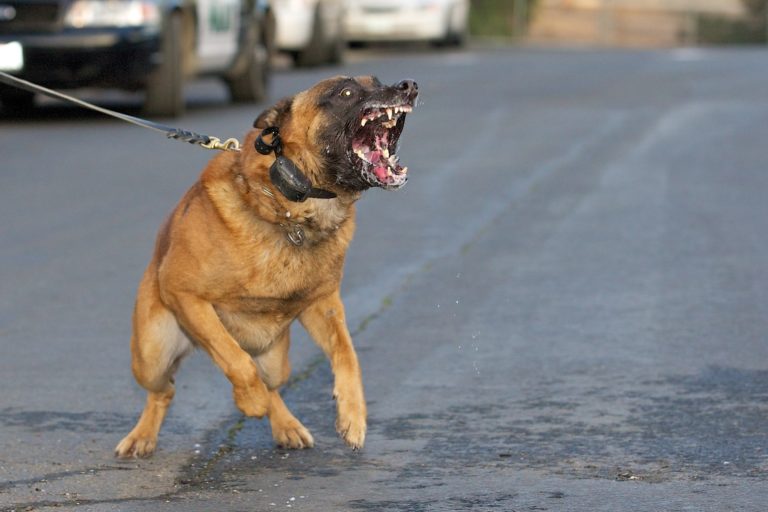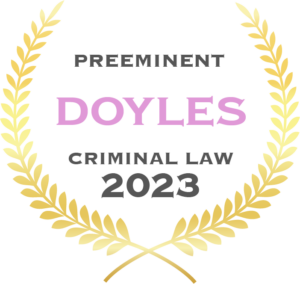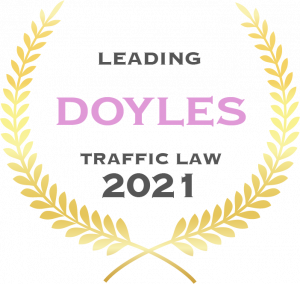Under the Companion Animals Act 1998 (‘The Act’), a dog that is in a public place must be under the effective control of some competent person by means of an adequate chain, cord or leash that is attached to the dog and that is being held by (or secured to) the person. This requirement can be contravened by either the owner of the dog, or another person in charge of the dog at that time (who is of or above the age of 16 years), resulting in both monetary penalties and possible criminal charges.
Classification of dogs
If a dog is deemed ‘dangerous’, ‘menacing’ or ‘restricted’, harsher penalties apply.
Dangerous Dog
Under section 33 of the Act, a dog is ‘dangerous’ if it:
- Has, without provocation, attacked or killed a person or animal (other than vermin); or
- Has, without provocation, repeatedly threatened to attack or repeatedly chased a person or animal (other than vermin); or
- Is kept or used for the purposes of hunting.
Menacing Dog
As provided by section 33A (1) of the Act, a dog is ‘menacing’ if it:
- has displayed unreasonable aggression towards a person or animal (other than vermin); or
- has, without provocation, attacked a person or animal (other than vermin) but without causing serious injury or death.
A ‘serious injury’ is:
- any injury that requires hospitalisation of a person or animal;
- a broken bone that requires medical or veterinary attention;
- a major laceration (that is, a wound caused by the tearing of body tissue or by multiple punctures caused by more than one bite from a dog) that requires medical or veterinary attention;
- a partial or total loss of sensation or function in a part of the body that requires medical or veterinary attention;
- any other injury requiring medical or veterinary attention;
- an injury that requires a person to have cosmetic surgery.
Restricted Dog
Under section 55 of the Act, the following dogs are ‘restricted’:
- American pit bull terrier or pit bull terrier;
- Japanese tosa;
- Dogo Argentino;
- Perro de Presa Canario or Presa Canario;
- Fila Brasileiro;
- Any other dog of a breed, kind or description whose importation into Australia is prohibited by or under the Customs Act 1901 of the Commonwealth;
- Any dog declared by an authorised officer of a council under Division 6 of this Part to be a restricted dog.
- Any other dog of a breed, kind or description prescribed by the regulations for the purposes of this section.
Offences where a dog attacks person or animal
The basis of the criminal charges for a dog attack is that if a dog rushes at, attacks, bites, harasses or chases any person or animal (other than vermin), whether or not any injury is caused to the person or animal the owner of the dog, or other person in charge of the dog at that time (who is of or above the age of 16 years) is guilty of an offence.
The maximum monetary penalty is $11,000 unless the dog is classified as a ‘dangerous, menacing or restricted dog,’ in which the penalty is $44,000.
This penalty, however, increases based on the actions (or omissions) of the owner, as well as the classification of the dog.
Reckless act or omission of the owner or carer
If a dog (not classified as dangerous, menacing or restricted dog) rushes at, attacks, bites, harasses or chases any person or animal (other than vermin), whether or not any injury is caused to the person or animal, as a result of a reckless act (or omission) of the owner’s or other person in charge of the dog at that time (who is of or above the age of 16 years) is guilty of an offence.
The maximum monetary penalty is $22,000 and/or imprisonment for 2 years.
Dangerous, menacing or restricted dog (injury not necessary)
If a dangerous, menacing or restricted dog rushes at, attacks, bites, harasses or chases any person or animal (other than vermin), whether or not any injury is caused to the person or animal, the owner or other person in charge of the dog at that time (who is of or above the age of 16 years) is guilty of an offence if it is as a result of a reckless act (or omission).
The maximum monetary penalty is $55,000 and/or imprisonment for 4 years.
Dangerous, menacing or restricted dog (injury occurs)
The owner of a dangerous dog, a menacing dog or a restricted dog is guilty of an offence if the dog attacks or bites any person (whether or not any injury is caused to the person), and occurs as a result of the owner’s failure to comply with any one or more of the requirements of section 51 or 56 (as the case requires) in relation to the dog.
The requirements relate to matters such as:
- Desexing
- Enclosure requirements
- Distinctive collar must be worn
- Dog must be kept on lead and be muzzled
- Registration of dog
- Permit required
The maximum monetary penalty is $77,000 and/or imprisonment for 5 years.
In addition, a conviction for this offence results in permanent disqualification from owning a dog or from being in charge of a dog in a public place, pursuant to section 23.
Lawful Excuses/Defences
Whilst these actions carry significant penalties, they will be not deemed an offence if it attack was the result of:
- The dog being teased, mistreated, attacked or otherwise provoked; or
- The person or animal trespassing on the property on which the dog was being kept; or
- The dog acting in reasonable defence of a person or property; or
- Lawful hunting; or
- Working of stock by the dog or the training of the dog in the working of stock.
Encouraging a dog to attack
Under section 17 of the Act, a person who sets on or urges a dog (other than a dangerous, menacing or restricted dog) to attack, bite, harass or chase any person or animal (other than vermin) is guilty of an offence, whether or not actual injury is caused.
The maximum monetary penalty is $22,000.
In circumstances where a person who sets on or urges a dangerous, menacing or restricted dog to attack, bite, harass or chase any person or animal (other than vermin) is guilty of an offence, whether or not actual injury is caused.
The maximum monetary penalty is $77,000 and/or imprisonment for 5 years.
In addition, a conviction for this offence results in permanent disqualification from owning a dog or from being in charge of a dog in a public place, pursuant to section 23.
Key Takeaways
- The Companion Animals Act 1998 mandates effective control of dogs in public through leashing to prevent attacks.
- Dogs classified as dangerous, menacing, or restricted face stricter penalties for attacks.
- Owners can face significant fines and imprisonment for their dog's unprovoked attacks or reckless behavior.
- Legal defenses include the dog being provoked, acting in defense, or the person or animal trespassing.
- Encouraging a dog to attack without a lawful excuse also carries heavy penalties, emphasizing responsible pet ownership and public safety.
Lawful Excuses/Defences
Whilst these actions carry significant penalties, they will be not deemed an offence if it attack was in the course of:
- A reasonable defence of a person or property; or
- A proper performance of the person’s duties as a police officer or correctional officer; or
- The use of a dog for the working of stock or the training of a dog in the working of stock; or
- lawful hunting.
If you or someone you know needs advice or representation for an alleged criminal offence, contact the team at Hamilton Janke Lawyer 24 hours a day, seven days a week by calling 4038 1666.
Written By

James Janke
James Janke is founding partner at Hamilton Janke Lawyers, and has more then decade of experience as a Criminal Defence Lawyer. Admitted to both the Supreme Court of New South Wales and High Court of Australia



